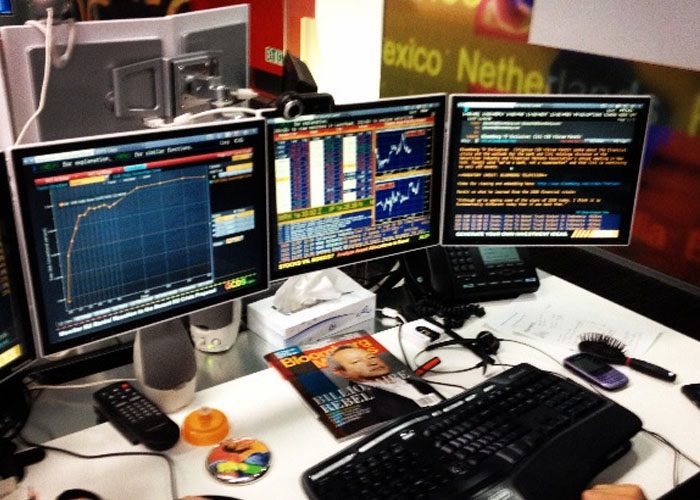One of the most active trading types, particularly in the United Kingdom, is day trading. Here are some of the essential details about day trading and getting started. Day trading entails purchasing and selling financial products within a single trading day, with positions being closed out at the end of each day and new ones being opened the next. To profit from modest market changes, day traders purchase and sell numerous assets on the same day or sometimes multiple times on the same day.

Intra-day trading is not for the casual trader since it needs time, effort, dedication, and a particular mindset. Making quick decisions and completing many trades for a modest profit each time is what day trading entails. It’s usually thought of as the polar opposite of conventional investment methods, which aim to profit from price fluctuations over a longer period.
-
Recognize the factors that Influence Day Trading
Before you start day trading in any market, there are a few things to keep in mind, as the practice might take a lot longer than a traditional buy and hold strategy. Because the focus of investment is on longer-term market movements, everyday fluctuations have minimal impact on the overall perspective. However, when day trading, the focus is on the elements that can influence intraday market behaviour like broker competition etoro vs freetrade.
These are some of them:
- The ease with which and how fast positions can be entered and abandoned determines a market’s liquidity. Day traders require a lot of liquidity because they are likely to execute many trades during the day.
- For day traders, the instability of an item, or how quickly its price changes, is vital. If substantial volatility is forecast during the day, the fluctuations can provide many short-term profit chances.
- Trading volume. The trade volume of an asset is the number of times it is bought or sold in a particular period. A high trade volume indicates an elevated level of interest and can determine entry and exit locations.
-
Decide how you want to Day Trade
The first step toward becoming a day trader is to determine which product you want to trade. Day trading is popular with derivatives. Spread betting, and CFD trading are the two main options in the UK.
There is no requirement to own the underlying asset when using these products. This means you can start and cancel positions faster, as well as wager on whether a market is rising or declining in price.
Because there is no set tax for day trading, the amount you pay will vary depending on the instrument you use to trade the markets. CFD trading, for example, is not free from the capital gains tax, even though losses can be offset against earnings.
-
Make a Day Trading Strategy
Before you begin day trading, you should write out exactly what you want to achieve and be practical about the goals you set for yourself. If you anticipate making a lot of money right immediately, you may be disappointed because day trading can have a steep learning curve.
It’s also crucial to think about how you’ll develop a process for entering and exiting the trade and whether you’ll use fundamental or technical analysis. Your day trades will concentrate around macroeconomic data releases, corporate reports, and breaking news if you choose to focus on fundamental analysis. On the other hand, technical analysis will focus on chart patterns, historical information, and technical indicators.
-
Learn how to manage the Risks of Day Trading
Developing a risk management strategy is important for being ready to trade. Traders can minimize any potential losses by putting procedures in place to prevent the worst-case situation. Stops and limits, as well as other risk management measures, are critical parts of each trader’s toolkit.
A successful trader is said to cut lost deals fast while allowing profitable transactions to run, and this is as true in day trading as it is in any other technique. A trader doesn’t have to be right all of the time, but they do have to recognize when they’re incorrect and respond promptly to ensure that they’re making more money on winning deals than they’re losing on losing trades.
Whether a trader should aim for a high win/loss ratio or focus on the risk-to-reward ratio. Successful day traders frequently have low win rates, even below 40%, but aim for a risk-to-reward ratio of at least 1:2, which means the trader expects to double the amount of money they are ready to risk. That is a personal decision, but one thing is certain: while there is nothing wrong with making a mistake and taking a modest loss, staying incorrect and suffering a large loss is the quickest way to end a short-term trading career.
-
Open and Monitor your First Position
It’s time to start trading after you’re confident in your trading strategy. If you aren’t prepared to trade on real markets, you can practice opening positions in a risk-free IG demo account. You’ll need to set the conditions of your trade now that you’ve opened an account. You’ll likely wish to open both long and short bets in a single trading day. If you believe a market will rise, you will choose to ‘purchase’ the asset, whereas if you believe a market will fall, you will choose to ‘sell’ it.
Remember that as a day trader, you’ll likely be opening and closing numerous deals on the same day, so stay on top of any market events or breaking news that could affect the values of the markets you’re interested in. You can do so by utilizing trade ideas and news.
It’s time to close any trades you still have open at the end of the day. One of the most crucial procedures at this point is to keep track of all the positions you’ve started and closed throughout the day, as well as effective and ineffective trades.
HedgeThink.com is the fund industry’s leading news, research and analysis source for individual and institutional accredited investors and professionals






































